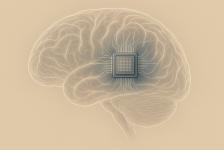Are you deciding between cloud and local storage for data backup? We compared both solutions, their advantages and disadvantages, and practical tips on securing your data. Learn which option fits your needs and how to set up a backup system that protects your important files from loss and cyber threats.

Each of us generates a massive amount of data today - from work files and photos to personal documents. But what if something goes wrong? Where to store data so we don't lose it? We'll look at the advantages and disadvantages of both cloud and local storage and advise you on how to solve backup in a way that's convenient and secure for you.
What are cloud and local storage?
You can easily imagine cloud storage as a virtual space somewhere on remote servers, which you access via the internet. Therefore, the files in the cloud are not physically with you, but you can access them from any device.
Well-known providers include Google Drive, Dropbox, or iCloud, which take care of the storage and protection of your data. Conversely, local storage consists of physical drives, like USB flash drives, external drives, or NAS servers. You have the data directly with you. The plus is that you can access them even when the internet goes down.
Advantages of cloud storage
One of the main advantages of the cloud is that you have access to data from anywhere and anytime, as long as you're online. Cloud storage also allows you to set up automatic data synchronization – files update themselves without you having to worry about anything. Another plus is flexibility. If you run out of space, you just buy more storage.
On the other hand, being in the cloud means being completely dependent on internet connectivity. Besides, you have to pay regular fees, which are not exactly low. Security can also be an issue. Every now and then, data leaks or losses occur.

Advantages of local storage
If you want to have your data fully under control, local storage is ideal for you. You can work with data offline and don't have to worry about monthly fees – you pay for an external drive once, and it serves you for years. Another advantage is quick access, especially if you work with larger files or multimedia data.
However, it's necessary to take care of the physical protection of the devices. External drives or USB flash drives are prone to damage or loss. Also, keep in mind that managing multiple drives can be challenging if you have a large amount of data.
How to choose the right storage for you?
Regular users often use the cloud because it offers easy sharing of photos and documents within family or friends. However, we recommend occasionally backing up to an external drive – the cloud is excellent for data accessibility, but local backup adds assurance in case of downtime or loss of account access.
In rare cases, some data may be lost – such an issue occurred with Google in the past. Companies might consider a combination of cloud and local storage. They can keep sensitive data locally while storing regular office tasks or remote work data in the cloud. This also simplifies data sharing among colleagues.
Data security both in the cloud and locally
Whether you use the cloud or local drives, always ensure proper data security. For cloud services, choose a strong password and enable two-factor authentication. Trusted services encrypt data, reducing the risk of leakage during transfer and storage.
For local storage, use encryption, such as with VeraCrypt or BitLocker, especially if storing sensitive data. If you use a security program, remember to update it regularly. To ensure your backup system is always ready, set up regular backup checks. For example, try restoring several files and verify they work correctly.
We personally recommend backing up according to the 3-2-1 rule – having three copies of the data, two on different storage types, and one offsite. For local storage, it's also important to occasionally transfer data to newer devices, as external drives can fail over time.
Which cloud platforms to choose?
When choosing a cloud platform, it depends on your specific needs. Google Drive is ideal for regular document sharing, while Dropbox is great for team collaboration where version history is important.
If you use Windows, OneDrive will be a suitable choice as it's well-integrated with Microsoft's office tools. For company backups requiring high security, Amazon S3 or Azure can also be considered as alternatives.
Cloud services often have a basic free version (e.g., Google Drive offers 15 GB). However, if you need more space, the price depends on the provider and capacity – for instance, 100 GB on Google Drive costs around 50 CZK per month. Local storage, like external drives, starts at around 1,500 CZK for 1 TB. A network storage (NAS) might be more expensive, but companies and advanced users often can't do without them.
As you have seen, both cloud and local storages have their pros and cons. If you don't work with data often, local storage will suffice. Conversely, for freelancers, companies, or even students, it's better to opt for the cloud. The best choice, however, is to combine both options, ensuring you truly won't lose your data.
What is DNS? Everything you need to know about its functionality and setup

When you type a website address into the browser, the correct page loads in an instant. This is managed by the DNS system, without which the internet as we know it would not exist at all. In this article, you will learn what DNS is, how it works, what types of records it contains, and why it is important for both speed and security of the connection.
How does fiber optic internet work and what do you need for its installation?

Fast and stable connection is a basic necessity in every household today. The solution is fiber optic internet, which works differently than regular cables and offers greater reliability to users. We'll explain how this technology works in practice, what it entails to run a fiber optic cable to your home, and what equipment you’ll need to keep everything running smoothly.
Cloud gaming – the end of consoles in sight?

Cloud gaming allows you to play games from anywhere without the need for expensive hardware. In this article, you'll learn how game streaming works, what advantages and limitations it brings, and which services are leading the way today. And most importantly: can it really threaten traditional consoles?
Chips under the skin and in the head. The future is closer than we think

Brain microchips already allow controlling a computer with mere thoughts. In the article, you will learn how they work, what they have brought to the first users, and what promises scientists and Elon Musk associate with them. Along with hopes, questions about safety, ethics, and where this technology might take us also arise.
What consumes the most data on mobile? YouTube, Spotify, Netflix and other apps under scrutiny

Mobile data usage can sometimes be unpleasantly surprising. The most are consumed by video streaming and music services – how much data does YouTube, Netflix or Spotify use? And what about other apps like social networks, maps or video calls? Check out the overview of the biggest data guzzlers and find out how to keep mobile data under control.
How to find out who is connected to your Wi-Fi – and can you easily disconnect them?

Is your internet slowing down or do you suspect that someone unauthorized is connected to your Wi-Fi? We advise you on how to find out who is connected to your Wi-Fi, and what to do if you find an intruder.